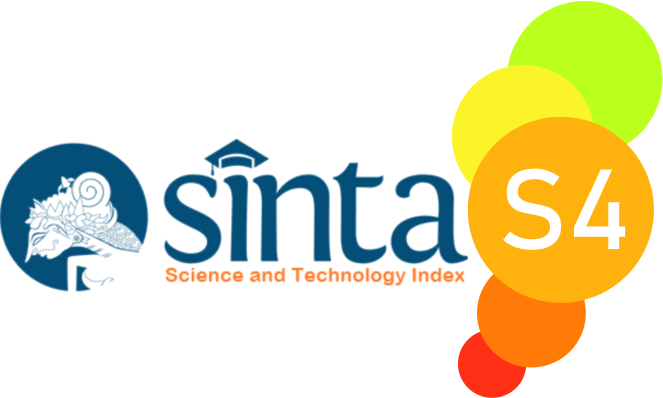Utilizing Question-and-Answer Technique to Boost Students’ English-Speaking Skills
Abstract
A question-and-answer technique is one of the strategies to learn English-speaking skills. It invites the class to ask the concerned student questions and avoids a monologue where all the focus is on one person, which helps the teacher reduce tension. The purpose of this study was to confirm the impact of question-and-answer sessions on the speaking proficiency of first-grade senior high school students in Malang, Indonesia. A Quasi-experimental research design was employed since the present study utilized two intact groups. To find out the result, the researchers conducted a pre-test to measure the homogeneity of the group and a post-test to verify the technique's effectiveness. Based on the pre-test result, the groups were claimed to be homogenous before treatment was done since the significant value (.53) was greater than 0.05 (.53> 0.05). However, the post-test result after the treatment indicated that the two groups differed significantly at 0.05 levels as the sig. of the test results was less than 0.05 (.001<0.05). Furthermore, the descriptive statistics revealed better performance in the experimental than in the control group (76.56 > 66.22). It is summarized that the students who were taught using question-and-answer techniques had better speaking ability than those who were not. Therefore, the researchers recommended teachers apply this technique to their students to develop their speaking ability.
References
Amin, Y. R., Sulistyo, T., Weganofa, R., & Herawati, S. (2024). Students’ Learning Strategies in Oral Productions Across Speaking Proficiencies. Journey: Journal of English Language and Pedagogy, 7(1), 1–13. https://doi.org/10.33503/journey.v7i1.3800
Anisa, K. D. (2015). Teachers’ Questions in English Lessons in SMA Negeri Salatiga. Universitas Kristen Satya Wacana.
Azhar, K. A., Iqbal, N., & Khan, M. S. (2019). Do I Talk Too Much In Class? A Quantitative Analysis of ESL Classroom Interaction. OKARA: Jurnal Bahasa Dan Sastra, 13(2), 193–202. https://doi.org/10.19105/ojbs.v13i2.2491
Corbett, J. (2003). An Intercultural Approach to English Language Teaching. Multilingual Matters Ltd.
Creswell, J. W. (2014). Research Design Qualitative, Quantitative, and Mixed Methods Approaches. (4th ed.). SAGE Publications, Inc.
David, F. (2007). Teacher’s Questioning Behavior and ESL Classroom Interaction Pattern. Humanity and Social Sciences Journal, 2(2), 127–131.
Harzanah, N. D., Islam, M. H., & Hamdany, B. (2024). Students’ Perception Toward English Meeting Club of Their Speaking Skill. Journey: Journal of English Language and Pedagogy, 7(1), 67–75. https://doi.org/10.33503/journey.v7i1.4014
Leasa, M., Abednego, A., & Batlolona, J. R. (2023). Problem-based Learning (PBL) with Reading Questioning and Answering (RQA) of Preservice Elementary School Teachers. International Journal of Learning, Teaching and Educational Research, 22(6), 245–261. https://doi.org/10.26803/ijlter.22.6.14
Moses, D. A., Leonard, M. K., Makin, J. G., & Chang, E. F. (2019). Real-time decoding of question-and-answer speech dialogue using human cortical activity. Nature Communications, 10(1), 1–14. https://doi.org/10.1038/s41467-019-10994-4
Musingafi, M. C. C., & Muranda, K. E. (2014). Students and Questioning: A Review of the Role Played By Students Generated Questions in the Teaching and Learning Process. Studies in Social Sciences and Humanities, 1(3), 101–107.
Rahmah, S. N. T. (2017). The Use of Question and Answer Method to Improve Students Reading Comprehension in Recount Text. IAIN Salatiga.
Sianipar, T. R., Regina, & Supardi, I. (2015). Improving Students’ Speaking Skills Through Interview Technique. Jurnal Pendidikan Dan Pembelajaran Khatulistiwa, 4(3), 1–17.
Silberman, M. L. (1996). Active Learning: 101 Strategies to Teach Any Subject. Allyn and Bacon.
Soares, M. A. C., & Parreiras, F. S. (2020). A literature review on question answering techniques, paradigms and systems. In Journal of King Saud University - Computer and Information Sciences (Vol. 32, Issue 6, pp. 635–646). King Saud bin Abdulaziz University. https://doi.org/10.1016/j.jksuci.2018.08.005
Sunyan, Y., Salam, U., & Novita, D. (2013). Teaching Speaking Through WH Questions Technique. Jurnal Pendidikan Dan Pembelajaran Khatulistiwa, 2(10), 1–15. http://jurnal.untan.ac.id/index.php/jpdpb/article/view/3738
Syakur, Abd., Sugirin, S., Margana, M., Junining, E., & Sabat, Y. (2020). Improving English Language Speaking Skills Using “Absyak” On-Line Learning Model for Second Semester in Higher Education. Budapest International Research and Critics in Linguistics and Education (BirLE) Journal, 3(2), 684–694. https://doi.org/10.33258/birle.v3i2.897
Wahyudi, D. (2017). The Use of Questioning technique to Eenhance Student’ Speaking Ability. Indonesian Journal of Integrated English Language Teaching, 3(1), 93–117.
Zhu, F., Lei, W., Wang, C., Zheng, J., Poria, S., & Chua, T.-S. (2021). Retrieving and Reading: A Comprehensive Survey on Open-domain Question Answering. ARXIV, 1–21. http://arxiv.org/abs/2101.00774
Copyright (c) 2024 Lasim Muzammil, Andy Andy, Umi Tursini, Lesi Bebeto

This work is licensed under a Creative Commons Attribution-ShareAlike 4.0 International License.

Journey: Journal of English Language and Pedagogy by http://ejurnal.budiutomomalang.ac.id/index.php/journey/index is licensed under a Creative Commons Attribution-ShareAlike 4.0 International License.






